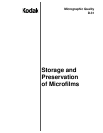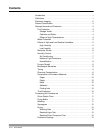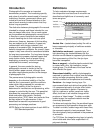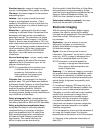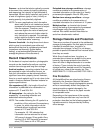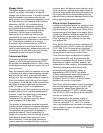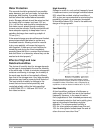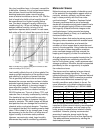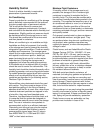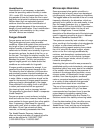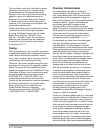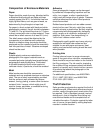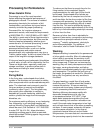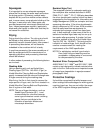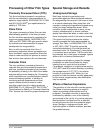
2 D-31 June 2002
Emulsion layer(s)—image or image-forming
layer(s) of photographic films, papers, and plates.
Film base—the plastic support for the emulsion
and backing layers.
Halation—halo or ghost around the desired
image on a photographic emulsion. (This is
caused by the reflection of rays of light from the
base to the emulsion or by internal scattering of
light within the film.)
Nitrate film—a photographic film with a base
consisting of cellulose nitrate. Nitrate-base films
decompose with age and are not suitable for
permanent records. The manufacture of nitrate
film by Eastman Kodak Company in the United
States of America was discontinued in 1951, but
older nitrate motion-picture films are often found in
storage. It is not always possible to determine by
visual examination if a film has a nitrate base.
However, neither KODAK nor RECORDAK
Microfilms in any width were ever made on
nitrate base.
Non-curl backing layer—a layer, usually made
of gelatin, applied to the side of the film base
opposite to that of the emulsion layer, for the
purpose of preventing curl.
NOTE:It is comparable to the emulsion layer
in thickness and is not removed in
processing. (Antihalation or other
layers removed in processing are
excluded from this definition.)
Polyester film—a photographic film having a
polyester base. This type of base manufactured
by Eastman Kodak Company is called Estar Base.
It is exceptionally tough and strong and has
excellent dimensional stability. Microfilm
emulsions on Estar Base are currently supplied
for many purposes. Kodak currently manufactures
only microfilms on Estar Base.
Safety photographic film—photographic film
which passes the ignition time test and burning
time test as specified in ANSI and ISO Standards.
Safety poly(ethylene terephthalate) base—
a polyester film base for recording materials
composed mainly of a polymer of ethylene
glycol and terephthalic acid. All safety films
(both acetate and polyester) manufactured
by Eastman Kodak Company meet these
requirements. This means that they are
difficult to ignite and are slow burning.
All silver-gelatin Kodak Microfilms on Estar Base,
when processed as recommended by Kodak,
meet the current specifications established by the
American National Standards Institute, Inc.,
(ANSI) for films intended for use as LE 500.
Substratum (subbing or precoat)—the layer
that bonds the emulsion to the base.
Electronic Imaging
With the coming of electronic digital imaging
systems, the need for continuing the quality
concepts already established in the micrographics
arena has evolved. Following are a few
key concepts.
Digitization—use of a scanner to convert
documents (on paper or microforms) to
digitally coded electronic images suitable
for electronic storage.
Digital—the use of binary code to record
information. “Information” can be text in a binary
code (e.g., ASCII), images in bitmapped form,
or sound in a sampled digital form or video.
NOTE:Information is recorded digitally for
accuracy in storage and transmission.
Some types of data manipulation are
easier in digital form.
Scanning—1.) In electronic imaging, scanning is
the operation which precedes digitization, where
the surface of a document is divided into pixels
and analog values are collected representing the
optical density (brightness and possibly color)
of each pixel.
2.) In electronic imaging, OCR scanning is the
conversion of marks that represent symbols into
symbols for use in a data processing system.
The paper or microfilm with the human-readable
marks is first scanned as an image, then is
analyzed to recognize the intended symbol.
The result is the set of symbolic information,
in a machine-readable code such as ASCII
(also known as handprint character recognition,
intelligent character recognition, and optical
character recognition).
3.) In micrographics, scanning is the movement of
an image on a reader screen in a direction
perpendicular to the direction of roll-film transport.
4.) Scanning is the systematic examination of
data (ISO).



